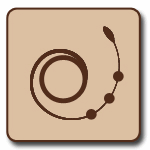
A focus group is a form of qualitative research in which a group of people is asked about their attitude towards a product, service, concept, advertisement, idea, or packaging. Questions are asked in an interactive group setting where participants are free to talk with other group members.
Ernest Dichter originated the idea of having a "group therapy" for products and this process is what became known as a focus group.[1]
In marketing
In the world of marketing, focus groups are seen as an important tool for acquiring feedback regarding new products, as well as various topics. In particular, focus groups allow companies wishing to develop, package, name, or test market a new product, to discuss, view, and/or test the new product before it is made available to the public. This can provide invaluable information about the potential market acceptance of the product.
In social sciences
In the social sciences and urban planning, focus groups allow interviewers to study people in a more natural setting than a one-to-one interview. In combination with participant observation, they can be used for gaining access to various cultural and social groups, selecting sites to study, sampling of such sites, and raising unexpected issues for exploration. Focus groups have a high apparent validity - since the idea is easy to understand, the results are believable. Also, they are low in cost, one can get results relatively quickly, and they can increase the sample size of a report by talking with several people at once. (Material based on: Marshall and Rossman, Designing Qualitative Research, 3rd Ed. London: Sage Publications, 1999, p. 115)
Traditional focus groups
In traditional focus groups, a screened (qualified) group of respondents gathers in the same room. They are screened to ensure that they are part of the relevant target market and that the group is a representative subgroup of this market segment. There are usually 6 to 10 members in the group, and the session usually lasts for 1 to 2 hours. A moderator guides the group through a discussion that probes attitudes about a client's proposed products or services. The discussion is loosely structured, and the moderator encourages the free flow of ideas. The moderator is typically given a list of objectives or an anticipated outline. He/she will generally have only a few specific questions prepared prior to the focus group. These questions will serve to initiate open-ended discussions.
Client representatives observe the discussion from behind a one-way mirror. Participants cannot see out, but the researchers and their clients can see in. Usually, a video camera records the meeting so that it can be seen by others who were not able to travel to the site. Transcripts can be created from the video tape. If the participants speak a different language than the clients, a simultaneous interpreter may be used.
Researchers examine more than the spoken words. They also try to interpret facial expressions, body language, and group dynamics. Moderators may use straight questioning or various projective techniques, including fixed or free association, story-telling and role-playing. Focus groups are often used to garner reaction to specific stimuli such as concepts, prototypes and advertising.
It is often suggested that respondents feel group pressure to conform and this can contaminate the results. Others hold that by using trained and experienced moderators who appropriately manage the discussion, this potential problem can be mitigated. Further, despite the potential for groupthink, marketers and sociologists find that group dynamics are useful in developing new streams of thought and covering an issue thoroughly.
Types of focus groups
Variants of focus groups include:
- Two-way focus group - one focus group watches another focus group and discusses the observed interactions and conclusion
- Dual moderator focus group - one moderator ensures the session progresses smoothly, while another ensures that all the topics are covered
- Dueling moderator focus group - two moderators deliberately take opposite sides on the issue under discussion
- Respondent moderator focus group - one or more of the respondents are asked to act as the moderator temporarily
- Client participant focus groups - one or more client representatives participate in the discussion, either covertly or overtly
- Mini focus groups - groups are composed of four or five members rather than 8 to 12
- Teleconference focus groups - telephone network is used
- Online focus groups - computers connected via the internet are used
Traditional focus groups can provide accurate information, and are less expensive than other forms of traditional marketing research. There can be significant costs however : if a product is to be marketed on a nationwide basis, it would be critical to gather respondents from various locales throughout the country since attitudes about a new product may vary due to geographical considerations. This would require a considerable expenditure in travel and lodging expenses. Additionally, the site of a traditional focus group may or may not be in a locale convenient to a specific client, so client representatives may have to incur travel and lodging expenses as well.
The use of focus groups has steadily evolved over time and is becoming increasingly widespread.
Problems and criticism
However, focus groups also have disadvantages: The researcher has less control over a group than a one-on-one interview, and thus time can be lost on issues irrelevant to the topic; the data are tough to analyze because the talking is in reaction to the comments of other group members; observers/ moderators need to be highly trained, and groups are quite variable and can be tough to get together. (Ibid.) Moreover, the number of members of a focus group is not large enough to be a representative sample of a population; thus, the data obtained from the groups is not necessarily representative of the whole population, unlike in opinion polls.
A fundamental difficulty with focus groups (and other forms of qualitative research) is the issue of observer dependency: the results obtained are influenced by the researcher, raising questions of validity. The issue evokes associations with Heisenberg’s famous Uncertainty Principle. As Heisenberg said, "What we observe is not nature itself, but nature exposed to our method of questioning." Indeed, the design of the focus group study (e.g. respondent selection, the questions asked, how they are phrased, how they are posed, in what setting, by whom, and so on) affects the answers obtained from respondents. In focus groups, researchers are not detached observers but always participants. Researchers must take this into account when making their analysis (Based on: Tjaco H. Walvis (2003), “Avoiding advertising research disaster: Advertising and the uncertainty principle”, Journal of Brand Management, Vol. 10, No. 6, pp. 403-409).
Douglas Rushkoff[2] argues that focus groups are often useless, and frequently cause more trouble than they are intended to solve, with focus groups often aiming to please rather than offering their own opinions or evaluations, and with data often cherry picked to support a foregone conclusion. Rushkoff cites the disastrous introduction of New Coke in the 1980s as a vivid example of focus group analysis gone bad.
United States government use of focus groups
The United States federal government makes extensive use of focus groups to assess public education materials and messages for their many programs. While many of these are appropriate for the purpose, many others are reluctant compromises which federal officials have had to make as a result of the Paperwork Reduction Act (44 U.S.C. 3501 et seq.) The bureaucratic procedures require the federal researcher to go through a very elaborate justification of why he/she needs to conduct a survey or any study that will involve more than 10 people. The researcher must also have the complete methodology approved by the Office of Management and Budgetof the Executive Office of the President--not always the paragon of scientific objectivity. Often, the labor for the approval is far greater than the labor to do the research. Federal researchers most often take the path of least resistance and use 9 person focus group or even several of these with different questions asked. So there are many federal focus groups and few surveys or other type studies independent of whether a focus group is the best or even appropriate methodology.
Source: Wikipedia


No comments:
Post a Comment